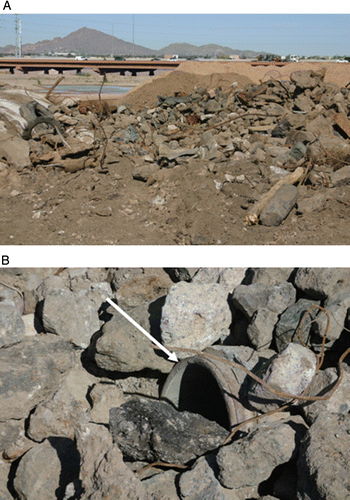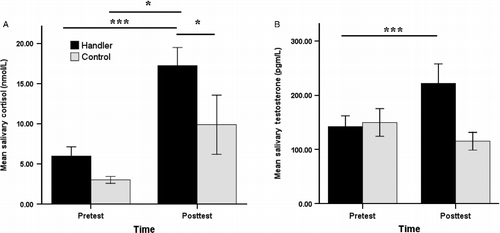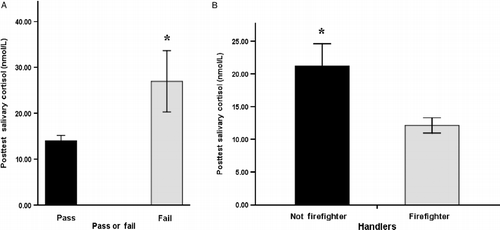Figures & data
Figure 1 (A) Rubble pile simulating disaster scene. (B) Sample hiding location for victim, shown by arrow.

Figure 2 Pretest and posttest salivary (A) cortisol concentrations (nmol/L) and (B) testosterone concentrations (pg/L) of handlers (black bars; N = 16) and controls (gray bars; N = 6). Data represent means ± SEM (SE of mean). Asterisks represent statistically significant differences between groups as shown by Bonferroni-adjusted post hoc tests following ANOVA; ***p ≤ 0.001; *p < 0.05.

Table I. Pretest and posttest subjective stress ratings by handlers and controls for themselves and their dogs.
Table II. Pearson correlations between cortisol and testosterone values within the Handler group (n = 16).
Table III. Spearman correlations between cortisol/testosterone concentrations and subjective stress ratings for handlers and dogs within the handler group (n = 16).
Table IV. Kendall τ-b correlations between subjective stress ratings for handlers and dogs within the handler group (n = 16).
Figure 3 Posttest salivary cortisol concentrations (nmol/L) of handlers who (A) passed (black bars; N = 12) or failed (gray bars; N = 4) certification and (B) not firefighters (black bar; N = 9) or firefighters (gray bar; N = 7). Data represent means ± SEM (SE of mean). Asterisks represent statistically significant differences between groups as shown by student's t-tests; *p < 0.05.
